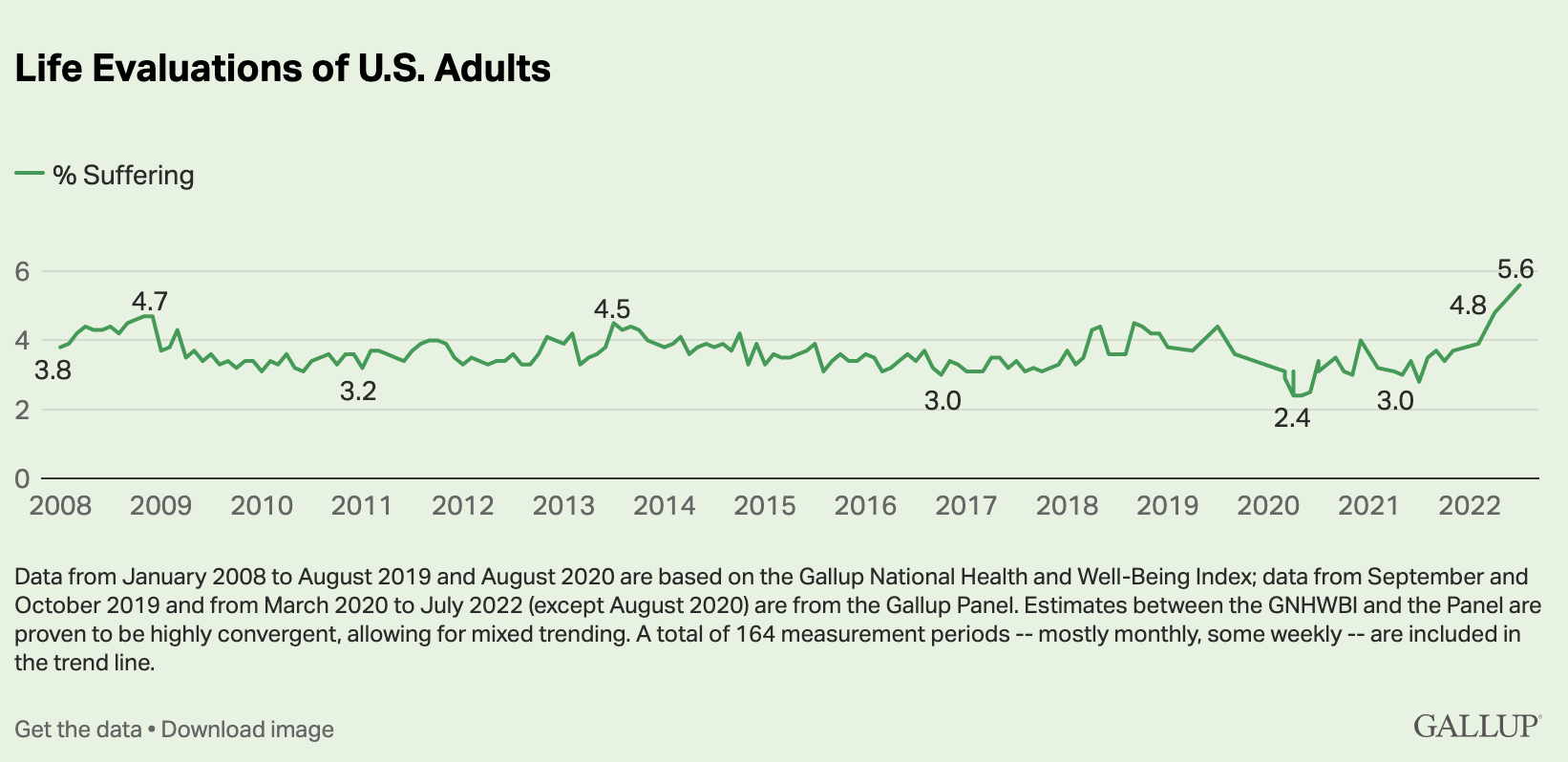
- The “suffering” rate has climbed for both Democrats and Republicans
- The percentage of adults classified as “thriving” has dropped again, to 51.2%
- Daily stress and worry remain steady and near pre-pandemic levels
WASHINGTON, D.C. — The percentage of Americans who evaluate their lives poorly enough to be considered “suffering” on Gallup’s Life Evaluation Index was 5.6% in July, the highest since the index’s inception in 2008. This exceeds the previous high of 4.8% measured in April and is statistically higher than all prior estimates in the COVID-19 era. Across extensive measurement since January 2008, the suffering percentage has reached 4.5% or higher on a handful of occasions.
The most recent results, obtained July 26 to Aug. 2, 2022, are based on web surveys of 3,649 U.S. adults as a part of the Gallup Panel, a probability-based, non-opt-in panel of about 115,000 adults across all 50 states and the District of Columbia.
For its Life Evaluation Index, Gallup classifies Americans as “thriving,” “struggling” or “suffering,” according to how they rate their current and future lives on a ladder scale with steps numbered from 0 to 10, based on the Cantril Self-Anchoring Striving Scale. Those who rate both their current and future lives a 4 or lower are classified as suffering. Those who rate their current life a 7 or higher and their anticipated life in five years an 8 or higher are classified as thriving.
The percentage of U.S. adults estimated to be thriving has steadily declined since it reached a record high of 59.2% in June 2021. The latest estimate of 51.2% is an 18-month low. The lowest recorded thriving rate of 46.4% was measured twice — first, in November 2008 amid the Great Recession, and second, in late April 2020, during the initial economic shutdown associated with the outbreak of COVID-19 in the U.S.